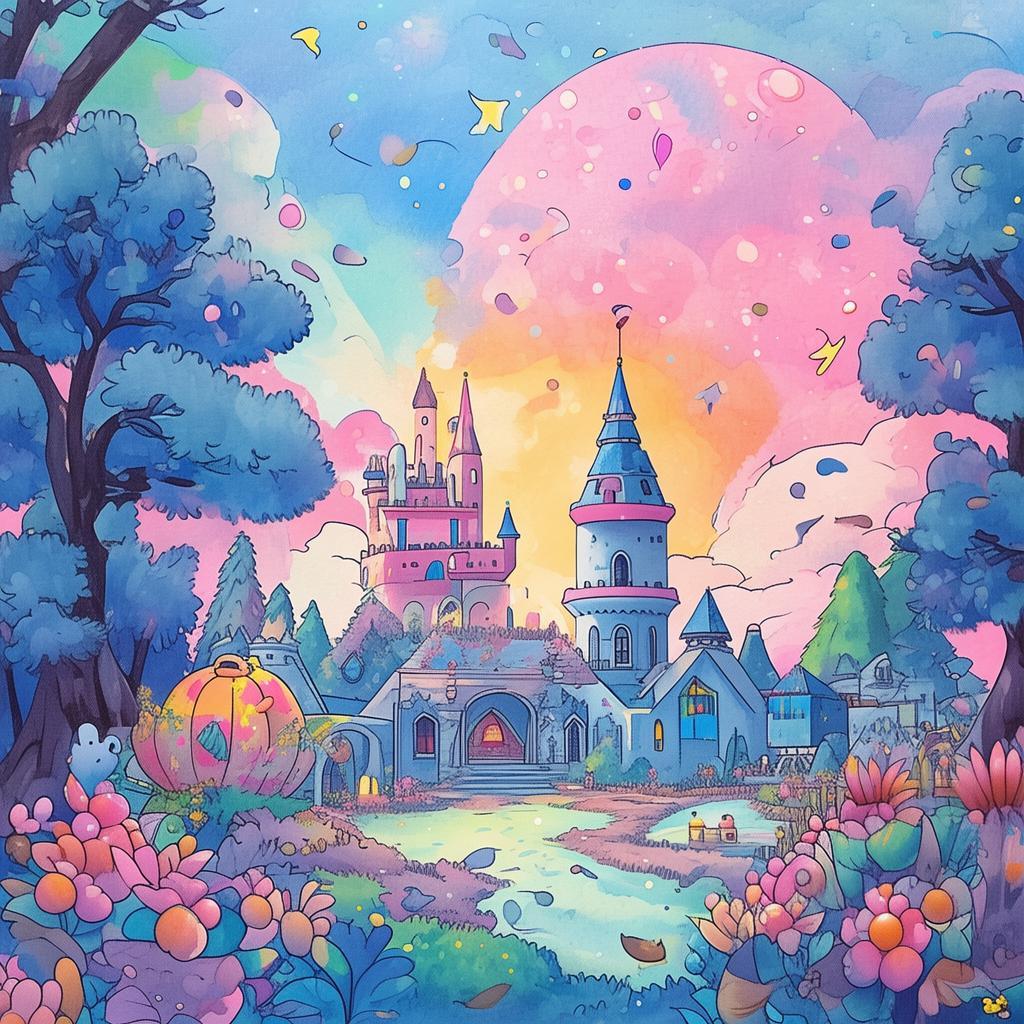The Clockwork Child's Perpetual Spring
In the heart of an ancient forest, where the trees whispered secrets of the past, there lived a child named Lila. She was not like other children, for she had known no other world but this one—a perpetual spring where the days were long and the flowers never withered. The sky was a constant shade of azure, the sun a gentle orb that never set, and the air was filled with the sweet scent of blooming flowers.
Lila had spent her days playing among the flowers, talking to the wind, and gazing at the stars that were always visible, a reminder that somewhere beyond this idyllic realm, there was something called night. But as she grew older, she began to notice that certain things never changed. The same flowers bloomed in the same patterns, the same streams of water meandered through the same paths, and the same birds sang the same songs each day.
One day, while exploring a hidden glade she had never seen before, Lila stumbled upon an old clock. It was intricately carved, its hands frozen at a single moment. As she reached out to touch it, the clock sprang to life, and the hands began to move. With a jolt, Lila found herself pulled into the clock, and the world around her shattered into a kaleidoscope of colors and shapes.
When the dust settled, she was in a new world, one with seasons and night. It was a world of children, laughter, and sorrow, but most importantly, it was a world that was not her own. She realized that the clock was a time loop, and each time she touched it, she was transported to different moments in her life, each one with the same ending—she would find the clock and be pulled back to the perpetual spring.
In this new world, Lila met a girl named Elara, who was just as curious about the time loop as Lila was. Elara had known about the clock since she was a child, but she had never seen anyone else enter or leave it. The two girls became friends, and together they began to piece together the puzzle of the time loop.
Elara explained that the clock was built by a race of beings who had discovered the secret to time travel. They had created the clock as a way to observe the cycles of life and death, to understand the nature of time itself. But something had gone wrong, and the clock had become trapped in a loop, repeating the same cycle over and over.
Lila and Elara discovered that the loop was not just about time; it was about memory and the power of choice. Each time Lila touched the clock, she had the opportunity to change her actions, to make different choices that might break the cycle. But every time she did, the loop would reset, and she would find herself back in the same situation, with the same choices to make.

As they delved deeper into the mystery, Lila and Elara discovered that the clock was not just a tool for time travel, but a mirror into the soul. Each moment they experienced within the loop was a reflection of their own fears, desires, and regrets. The more they understood themselves, the more they realized that the key to breaking the loop lay within their own hearts.
One day, as Lila stood before the clock, she felt a surge of determination. She had realized that the loop was a manifestation of her own sorrow—a sorrow that she had carried since she was a child. She had been separated from her parents and left to live alone in the perpetual spring, and that loneliness had created a cycle of sorrow that she had repeated over and over.
With Elara's help, Lila began to make different choices within the loop. She learned to forgive herself for the past, to embrace the present, and to look forward to the future. She learned to love, to laugh, and to hope. Each time she touched the clock, she made a choice that brought her closer to breaking the cycle.
Finally, on the day of the climax, Lila stood before the clock, her heart pounding. She knew that this was it—the moment of truth. As she reached out to touch the clock, she felt a surge of love and acceptance flood through her. The clock began to spin faster and faster, and Lila felt herself pulled into a whirlwind of colors and sounds.
When the whirlwind finally settled, Lila found herself back in the perpetual spring, but it was not the same place she had left. The flowers were more vibrant, the streams of water were clearer, and the birds sang with a newfound joy. She looked around and saw Elara standing there, smiling.
Lila realized that she had broken the loop, not by changing the past, but by changing her own perspective. She had learned to live in the present and to embrace the cycle of life and death. The perpetual spring was no longer a place of sorrow, but a place of beauty and peace.
And so, Lila and Elara continued to play among the flowers, to talk to the wind, and to gaze at the stars. But now, they knew that the time loop was just a part of their journey, a lesson in the power of love and the beauty of change.
✨ Original Statement ✨
All articles published on this website (including but not limited to text, images, videos, and other content) are original or authorized for reposting and are protected by relevant laws. Without the explicit written permission of this website, no individual or organization may copy, modify, repost, or use the content for commercial purposes.
If you need to quote or cooperate, please contact this site for authorization. We reserve the right to pursue legal responsibility for any unauthorized use.
Hereby declared.









